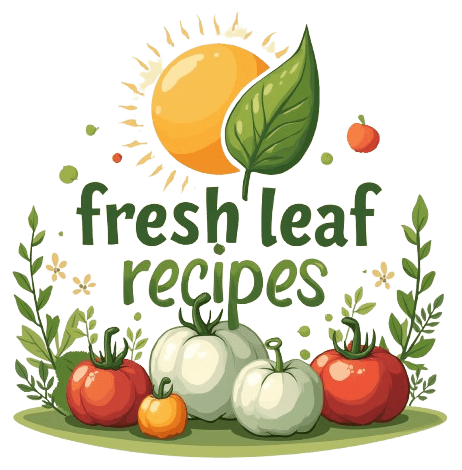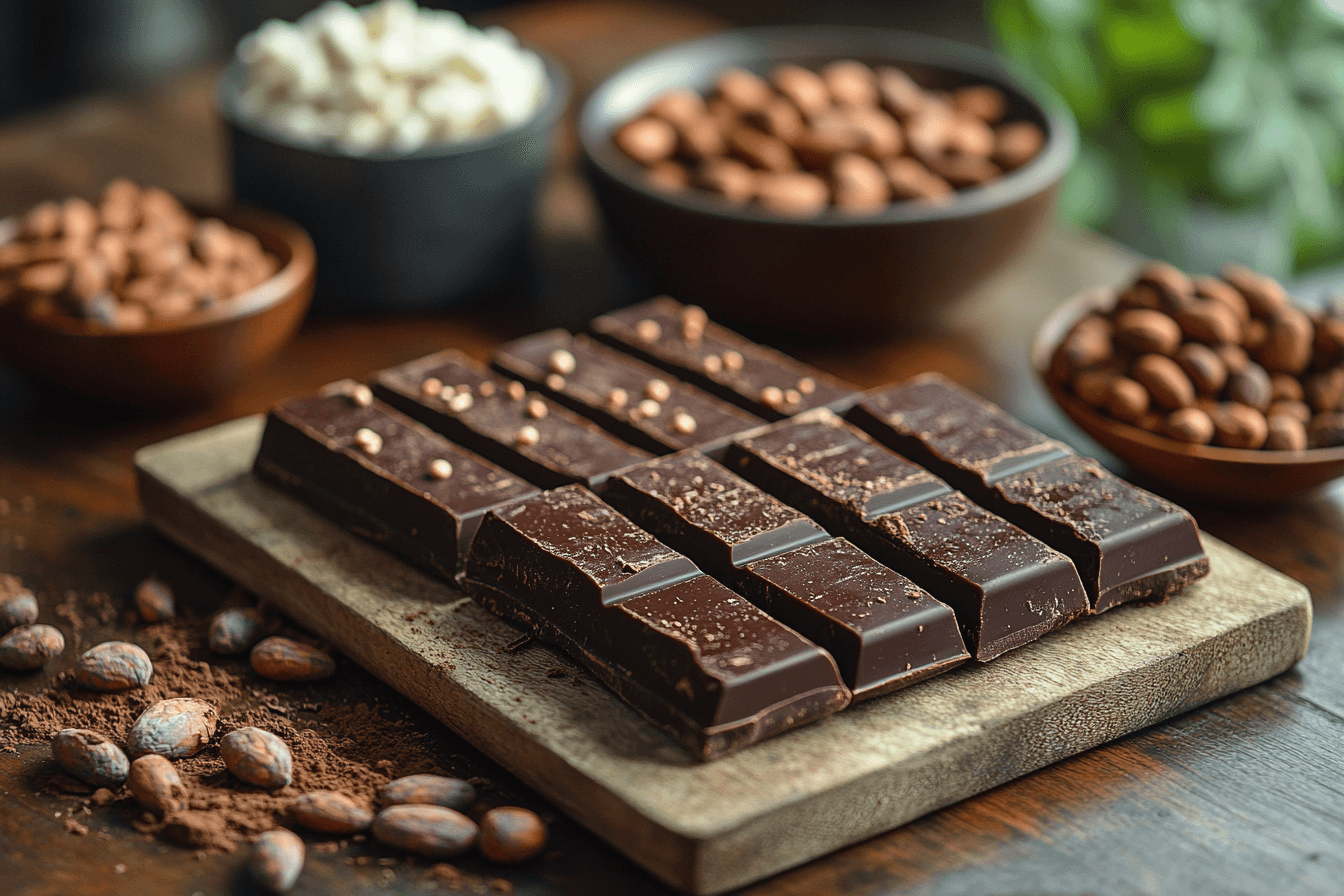Is Chocolate Gluten Gluten-Free? A Complete Guide
If you’re someone who’s Glutenin-intolerant or has celiac disease, you’ve likely asked yourself this burning question: “Is chocolate gluten gluten-free?” The answer is more nuanced than a simple yes or no, and it all depends on the type of chocolate and how it’s made. In this detailed guide, we’ll explore the relationship between chocolate and gluten, bust some myths, and help you enjoy this sweet treat without worry.
What Is Gluten? Understanding the Basics
Before diving into chocolate, let’s first understand what gluten is and why it’s a concern for many people.
How Gluten Impacts Diet and Health
Gluten is a type of protein found in grains such as wheat, barley, and rye. For most people, consuming gluten poses no issues. However, for those with celiac disease or gluten sensitivity, even small amounts of gluten can trigger symptoms like bloating, abdominal pain, and fatigue.
Block Quote: “Gluten is harmless for most, but for others, it’s like an uninvited guest causing havoc at the party in your gut. That’s why avoiding it is so critical for some individuals.”
Common Foods That Contain Gluten
Gluten is commonly found in bread, pasta, baked goods, and processed foods. Surprisingly, it can also sneak into unexpected places like sauces, marinades, and yes, even chocolate products.
Table of Contents
What Is Chocolate? Ingredients and Manufacturing
Chocolate may seem like a straightforward treat, but its manufacturing process and ingredients can vary widely. These variations are where gluten may or may not come into the picture.
The Core Ingredients in Chocolate
At its core, chocolate is made from cacao beans, cocoa butter, and sugar—all naturally Glutenin-free. However, the addition of other ingredients like milk powder, flavorings, or emulsifiers can introduce gluten.
How Chocolate Is Processed: Potential Sources of Gluten
Here’s where things get tricky: during manufacturing, chocolate products may come into contact with gluten-containing ingredients. This cross-contamination often occurs when chocolate is made in the same facility as other products with gluten.
Is Pure Chocolate Gluten-Free?
Now that we know the basics, let’s focus on pure chocolate. Is it naturally gluten-free? The answer is mostly yes, but with a few caveats.
Dark Chocolate vs. Milk Chocolate: Gluten-Free Differences
Pure dark chocolate, made with only cacao, cocoa butter, and sugar, is generally Glutenin-free. However, milk chocolate, which contains additional ingredients like milk powder and flavorings, may carry a higher risk of gluten contamination. Always check the label to confirm.
The Role of Additives: Hidden Sources of Gluten in Chocolate
Certain additives, like malt flavoring or barley extract, can sneak gluten into chocolate products. These ingredients are commonly used in flavored or specialty chocolates, so reading the ingredient list is crucial.
Block Quote: “When it comes to chocolate, it’s not just about sweetness—it’s about awareness. Gluten can hide in the smallest, unexpected ingredients.”
Types of Chocolate Products and Their Gluten Status
While pure chocolate is often Glutenin-free, processed chocolate products can be a mixed bag. Let’s break down some common types and their gluten status.
Chocolate Bars and Gluten-Free Options
Most high-quality chocolate bars are gluten-free. However, some contain ingredients like cookie crumbles or wafers that are not. Look for brands that clearly label their products as gluten-free.
Chocolate Syrups and Spreads: What to Look For
Popular chocolate syrups like those used in milkshakes or ice creams can sometimes contain gluten. Nut spreads with chocolate (like hazelnut-chocolate spreads) may also contain gluten, especially if processed in shared facilities.
Chocolate Candies and Gluten-Free Certification
Chocolate candies, especially those with fillings or coatings, are a potential gluten minefield. Opt for candies with a certified gluten-free label to ensure safety.
Identifying Gluten in Chocolate Products and Trusted Gluten-Free Brands
How to Identify Gluten in Chocolate Products
Not all chocolate products are created equal, and gluten can hide in places you might not expect. Knowing how to spot gluten in chocolate is the first step toward enjoying this treat without risking your health.
Reading Labels: Key Terms to Watch For
Labels can be your best friend or your worst enemy when it comes to gluten. Chocolate products often have lengthy ingredient lists, and some terms signal the presence of gluten. Keep an eye out for:
- Malt or Malted Barley: This is a common source of gluten, used as a sweetener or flavor enhancer in chocolate.
- Barley Malt Extract: Frequently found in flavored chocolates.
- Modified Food Starch: Unless specified as derived from corn, it could contain gluten.
- Cookie or Crumble Additions: Wafers or biscuit pieces in chocolates are rarely gluten-free.
Pro Tip: When in doubt, look for a “Certified Gluten-Free” logo or contact the manufacturer directly. Transparency is key!
Certification Marks: Trusted Gluten-Free Symbols
Certification symbols like the GF logo or Celiac Safe label ensure that the product is rigorously tested and free from gluten contamination. These marks are especially helpful for processed chocolate products like spreads, candies, or hot cocoa mixes.
Emoji Insight: Spot the GF logo! It’s like a chocolate detective’s badge, ensuring your treat is safe to eat.
Gluten-Free Chocolate Brands You Can Trust
If hunting through labels sounds like too much work, you can rely on trusted gluten-free chocolate brands. These companies go the extra mile to ensure their products are safe for people avoiding gluten.
Popular Gluten-Free Chocolate Brands
- Enjoy Life: This brand specializes in allergy-friendly foods, including chocolate bars, chips, and snacks that are certified gluten-free.
- Green & Black’s: Known for their organic chocolate, many of their products are naturally gluten-free.
- Alter Eco: They focus on pure, simple ingredients, and their dark chocolates are usually gluten-free.
- Hu Kitchen: Offering paleo and gluten-free chocolate made from clean ingredients.
- Lindt (Select Products): While not all Lindt products are gluten-free, their Excellence Dark Chocolate range typically is. Always check the label!
Homemade Gluten-Free Chocolate Ideas
For those who love to experiment, making your own chocolate is a fun and safe way to guarantee it’s gluten-free. Here’s how:
- Start with Pure Ingredients: Use unsweetened cocoa powder, cocoa butter, and sugar to craft your own chocolate bars or truffles.
- Avoid Additives: Stick to natural flavorings like vanilla or orange zest.
- Create Fun Shapes: Use silicone molds to make chocolates for parties or gifts.
Block Quote: “Making chocolate at home isn’t just safe—it’s an adventure! You control the ingredients, flavors, and of course, the gluten-free guarantee.”

Cross-Contamination Risks and How to Avoid Them
Even when a chocolate product is gluten-free, cross-contamination can occur during production. This is especially true for chocolates made in facilities that also process wheat, barley, or rye.
Shared Equipment and Facilities in Chocolate Production
Cross-contamination happens when gluten-containing ingredients come into contact with gluten-free products via shared machinery or storage areas. For instance, a chocolate factory that produces cookie-filled bars alongside pure chocolate may inadvertently introduce gluten into the latter.
What Can You Do?
- Look for chocolates explicitly labeled as “Made in a Gluten-Free Facility.”
- Contact the manufacturer to ask about their practices.
- Choose brands that specialize in gluten-free or allergy-friendly products.
Tips for Reducing Cross-Contamination Risk
If you want to be extra cautious:
- Buy Certified Products: As mentioned earlier, certifications ensure the product is tested and safe.
- Shop from Dedicated Stores: Some health food stores specialize in gluten-free products.
- Educate Yourself: Understand how cross-contamination works to make more informed choices.
Emoji Insight: Consider certifications as your shield against accidental gluten exposure.
FAQs: Common Questions About Gluten and Chocolate
Let’s tackle some frequently asked questions to clear up any confusion.
Can I Eat Chocolate on a Gluten-Free Diet?
Yes, you can! Most pure chocolate products are naturally gluten-free. However, always read the label and look out for potential cross-contamination or hidden gluten in flavored or processed chocolates.
Does White Chocolate Contain Gluten?
White chocolate is typically gluten-free, as it’s made from cocoa butter, sugar, and milk. However, flavored varieties or those with cookie crumbles may not be safe.
Is Hot Chocolate Gluten-Free?
Not always. While pure cocoa powder is gluten-free, premade hot chocolate mixes often contain malt or other gluten-containing additives. Opt for certified gluten-free brands or make your own with cocoa powder, milk, and sugar.
Addressing FAQs, Solving Common Problems, and Conclusion
More FAQs About Gluten and Chocolate
Let’s dive deeper into questions many people ask about Cacao and gluten, especially those new to gluten-free diets.
Does Dark Chocolate Always Contain Gluten?
Pure dark Cacao is usually gluten-free, but flavored or specialty dark chocolates can contain gluten. Add-ins like pretzels, cookies, or even barley malt flavoring can make dark chocolate unsafe for those avoiding gluten. Always double-check labels.
What About Vegan Chocolate?
Vegan chocolate is often gluten-free since it skips ingredients like milk powder. However, vegan doesn’t automatically mean gluten-free. The key is to ensure that there are no gluten-containing additives or cross-contamination risks.
Can I Trust Chocolates Without a Gluten-Free Label?
While some Cacao products may not be explicitly labeled as gluten-free, they can still be safe. Look for ingredient transparency. If the product lists no gluten-containing ingredients and mentions no risk of cross-contamination, it’s likely safe to eat.
Common Problems and Practical Solutions
Navigating gluten-free chocolate can be challenging, especially with all the misinformation out there. Here are some common issues and how to solve them.
Problem: Misleading Labels
Some Cacao products may seem gluten-free at first glance but contain hidden gluten in the form of additives, flavorings, or fillers.
Solution:
- Learn to spot common gluten-containing terms like “malt extract” or “wheat starch.”
- Stick to trusted brands with clear gluten-free certifications.
- When in doubt, call the manufacturer for clarification.
Block Quote: “Reading labels might feel tedious, but it’s like being a food detective—it ensures your safety and peace of mind.”
Problem: Cross-Contamination in Shared Facilities
Even gluten-free chocolates can become unsafe if made in facilities that also handle wheat products.
Solution:
- Purchase chocolates labeled “Produced in a Gluten-Free Facility.”
- Focus on brands specializing in allergy-friendly or celiac-safe foods.
- Choose single-origin or artisan chocolates that are less likely to be mass-produced alongside gluten-containing products.
Problem: Dining Out and Chocolate Desserts
Chocolate desserts in restaurants—like cakes, brownies, or chocolate sauce—are often packed with gluten.
Solution:
- Inform the staff of your dietary restrictions.
- Stick to simple options like fresh fruit with melted dark chocolate (if confirmed gluten-free).
- Consider bringing your own gluten-free chocolate for peace of mind.
Emoji Insight: Fresh strawberries dipped in gluten-free chocolate? A simple and safe dessert idea!
Gluten-Free Chocolate Brands to Love
We’ve already discussed some trusted brands, but let’s highlight their best offerings to make your next shopping trip easier.
Top Gluten-Free Chocolate Products
- Enjoy Life Chocolate Chips: Perfect for baking or snacking, and certified gluten-free.
- Hu Chocolate Bars: Made with simple, clean ingredients and available in fun flavors like hazelnut butter.
- Lindt 70% Dark Chocolate (Select Products): Offers rich flavor without gluten—just be sure to check the label for specific varieties.
- Alter Eco Dark Coconut Toffee: Certified gluten-free and crafted with sustainable practices.
Pro Tip: Stock up on gluten-free chocolate during sales—it doesn’t hurt to have extra when cravings hit!
To provide additional value to readers, consider linking the following resources from FreshLeafRecipes:
- Mention healthy chocolate treats and link to Healthy 3-Ingredient Banana Bread Cookies.
- Use quick gluten-free desserts to link to 10-Minute Healthy Banana Bread Cookies Without Flour.
- Highlight dessert pudding ideas and link to Banana Bread Pudding Magnolia Recipe.
Conclusion: Enjoying Gluten-Free Chocolate with Confidence
Chocolate lovers rejoice! The sweet truth is that chocolate, in its purest form, is gluten-free. However, when it comes to processed or flavored chocolates, vigilance is key. By learning to read labels, understanding cross-contamination risks, and choosing trusted brands, you can safely indulge in your favorite treat.
Remember, being gluten-free doesn’t mean missing out. With so many certified gluten-free options available—and even the opportunity to make your own—you’ll never have to compromise on flavor or safety.

